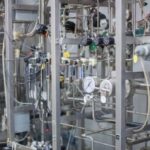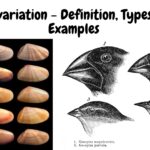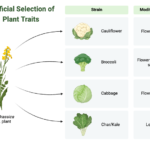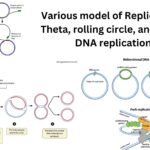IB Biology 6 Views 1 Answers
Sourav PanLv 9November 8, 2024
How can an absorption spectrum for chlorophyll and an action spectrum for photosynthesis be drawn?
How can an absorption spectrum for chlorophyll and an action spectrum for photosynthesis be drawn?
Please login to save the post
Please login to submit an answer.
Sourav PanLv 9May 15, 2025
To draw an absorption spectrum for chlorophyll and an action spectrum for photosynthesis, one must understand the characteristics of each spectrum and the steps involved in creating them. Here’s how to approach this task:
Absorption Spectrum for Chlorophyll
Definition
The absorption spectrum shows the specific wavelengths of light absorbed by chlorophyll pigments, primarily chlorophyll a and b. This spectrum typically displays peaks at certain wavelengths where absorption is maximized.
Steps to Draw the Absorption Spectrum
- Draw and Label Axes:
- X-axis: Label it as Wavelength (nm), ranging from approximately 400 nm to 700 nm.
- Y-axis: Label it as Percentage of Light Absorbed (%), ranging from 0% to 100%.
- Plotting Data:
- Identify the key absorption peaks:
- Chlorophyll a: Peaks around 430 nm (blue) and 662 nm (red).
- Chlorophyll b: Peaks around 453 nm (blue) and 642 nm (red).
- Draw curves that spike at these wavelengths, indicating high absorption, and drop near the green region (around 500-550 nm), where absorption is low.
- Identify the key absorption peaks:
- Smooth Curve:
- Connect the points with a smooth curve to represent the continuous nature of absorption across wavelengths.
Action Spectrum for Photosynthesis
Definition
The action spectrum indicates the effectiveness of different wavelengths of light in driving photosynthesis, reflecting the rate of photosynthesis at various wavelengths.
Steps to Draw the Action Spectrum
- Draw and Label Axes:
- X-axis: Label it as Wavelength (nm), ranging from approximately 400 nm to 700 nm.
- Y-axis: Label it as Rate of Photosynthesis (% of Maximum Rate), ranging from 0% to 100%.
- Plotting Data:
- Identify peaks corresponding to effective wavelengths for photosynthesis:
- High rates at blue (around 430 nm) and red (around 660 nm).
- A trough in the green region (around 500-550 nm) where photosynthesis is less effective.
- Identify peaks corresponding to effective wavelengths for photosynthesis:
- Smooth Curve:
- Similar to the absorption spectrum, connect the points with a smooth curve, showing peaks at blue and red wavelengths.
Comparison of Spectra
- Both spectra show similar patterns with peaks in the blue and red regions due to chlorophyll’s absorption characteristics.
- The action spectrum reflects biological effectiveness, while the absorption spectrum indicates physical absorption properties.
- The correlation between these spectra supports the idea that light absorbed at specific wavelengths effectively drives photosynthesis.
0
0 likes
- Share on Facebook
- Share on Twitter
- Share on LinkedIn
0 found this helpful out of 0 votes
Helpful: 0%
Helpful: 0%
Was this page helpful?




